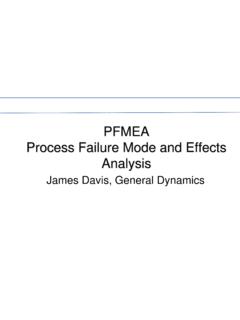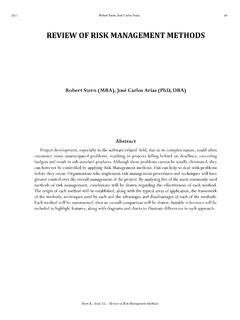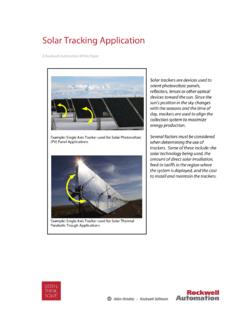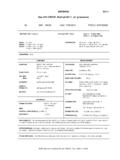Transcription of PROCEDURE 1. QUALITY ASSURANCE REQUIREMENTS FOR …
1 While we have taken steps to ensure the accuracy of this Internet version of the document, it is not the official version. Please refer to the official version in the FR publication, which appears on the Government Printing Office's eCFR website IDX?SID=C7836E6FF67E5AD001 BCB19 CCFD99C1A&NODE=40 #40 PROCEDURE 1. QUALITY ASSURANCE REQUIREMENTS FOR GAS CONTINUOUS EMISSION. monitoring SYSTEMS USED FOR COMPLIANCE DETERMINATION. 1. Applicability and Principle Applicability. PROCEDURE 1 is used to evaluate the effectiveness of QUALITY control (QC) and QUALITY ASSURANCE (QA) procedures and the QUALITY of data produced by any continuous emission monitoring system (CEMS) that is used for determining compliance with the emission standards on a continuous basis as specified in the applicable regulation.
2 The CEMS may include pollutant ( , S02 and N0x) and diluent ( , 02 or C02) monitors. This PROCEDURE specifies the minimum QA REQUIREMENTS necessary for the control and assessment of the QUALITY of CEMS data submitted to the Environmental Protection Agency (EPA). Source owners and operators responsible for one or more CEMS's used for compliance monitoring must meet these minimum REQUIREMENTS and are encouraged to develop and implement a more extensive QA program or to continue such programs where they already exist. Data collected as a result of QA and QC measures required in this PROCEDURE are to be submitted to the Agency. These data are to be used by both the Agency and the CEMS operator in assessing the effectiveness of the CEMS QC and QA procedures in the maintenance of acceptable CEMS operation and valid emission data.
3 Appendix F, PROCEDURE 1 is applicable December 4, 1987. The first CEMS accuracy assessment shall be a relative accuracy test audit (RATA) (see section 5) and shall be completed by March 4, 1988 or the date of the initial performance test required by the applicable regulation, whichever is later. Principle. The QA procedures consist of two distinct and equally important functions. One function is the assessment of the QUALITY of the CEMS data by estimating accuracy. The other function is the control and improvement of the QUALITY of the CEMS data by implementing QC. policies and corrective actions. These two functions form a control loop: When the assessment function indicates that the data QUALITY is inadequate, the control effort must be increased until the data QUALITY is acceptable.
4 In order to provide uniformity in the assessment and reporting of data QUALITY , this PROCEDURE explicitly specifies the assessment methods for response drift and accuracy. The methods are based on procedures included in the applicable performance specifications (PS's) in appendix B of 40 CFR part 60. PROCEDURE 1 also requires the analysis of the EPA audit samples concurrent with certain reference method (RM) analyses as specified in the applicable RM's. Because the control and corrective action function encompasses a variety of policies, specifications, standards, and corrective measures, this PROCEDURE treats QC REQUIREMENTS in general terms to allow each source owner or operator to develop a QC system that is most effective and efficient for the circumstances.
5 2. Definitions Continuous Emission monitoring System. The total equipment required for the determination of a gas concentration or emission rate. Diluent Gas. A major gaseous constituent in a gaseous pollutant mixture. For combustion sources, CO2 and O2 are the major gaseous constituents of interest. Span Value. The upper limit of a gas concentration measurement range that is specified for affected source categories in the applicable subpart of the regulation. Zero, Low-Level, and High-Level Values. The CEMS response values related to the source specific span value. Determination of zero, low-level, and high-level values is defined in the appropriate PS in appendix B of this part.
6 Calibration Drift (CD). The difference in the CEMS output reading from a reference value after a period of operation during which no unscheduled maintenance, repair or adjustment took place. The reference value may be supplied by a cylinder gas, gas cell, or optical filter and need not be certified. Relative Accuracy (RA). The absolute mean difference between the gas concentration or emission rate determined by the CEMS and the value determined by the RM's plus the percent error confidence coefficient of a series of tests divided by the mean of the RM tests or the applicable emission limit. 3. QC REQUIREMENTS Each source owner or operator must develop and implement a QC program.
7 As a minimum, each QC program must include written procedures which should describe in detail, complete, step-by- step procedures and operations for each of the following activities: 1. Calibration of CEMS. 2. CD determination and adjustment of CEMS. 3. Preventive maintenance of CEMS (including spare parts inventory). 4. Data recording, calculations, and reporting. 5. Accuracy audit procedures including sampling and analysis methods . 6. Program of corrective action for malfunctioning CEMS. As described in section , whenever excessive inaccuracies occur for two consecutive quarters, the source owner or operator must revise the current written procedures or modify or replace the CEMS to correct the deficiency causing the excessive inaccuracies.
8 These written procedures must be kept on record and available for inspection by the enforcement agency. 4. CD Assessment CD Requirement. As described in 40 CFR (d), source owners and operators of CEMS. must check, record, and quantify the CD at two concentration values at least once daily (approximately 24 hours) in accordance with the method prescribed by the manufacturer. The CEMS calibration must, as minimum, be adjusted whenever the daily zero (or low-level) CD or the daily high-level CD exceeds two times the limits of the applicable PS's in appendix B of this regulation. Recording Requirement for Automatic CD Adjusting Monitors. Monitors that automatically adjust the data to the corrected calibration values ( , microprocessor control ) must be programmed to record the unadjusted concentration measured in the CD prior to resetting the calibration, if performed, or record the amount of adjustment.
9 Criteria for Excessive CD. If either the zero (or low-level) or high-level CD result exceeds twice the applicable drift specification in appendix B for five, consecutive, daily periods, the CEMS is out-of- control . If either the zero (or low-level) or high-level CD result exceeds four times the applicable drift specification in appendix B during any CD check, the CEMS is out-of- control . If the CEMS is out-of- control , take necessary corrective action. Following corrective action, repeat the CD checks. Out-Of- control Period Definition. The beginning of the out-of- control period is the time corresponding to the completion of the fifth, consecutive, daily CD check with a CD in excess of two times the allowable limit, or the time corresponding to the completion of the daily CD check preceding the daily CD check that results in a CD in excess of four times the allowable limit.
10 The end of the out-of- control period is the time corresponding to the completion of the CD check following corrective action that results in the CD's at both the zero (or low-level) and high-level measurement points being within the corresponding allowable CD limit ( , either two times or four times the allowable limit in appendix B). CEMS Data Status During Out-of- control Period. During the period the CEMS is out-of- control , the CEMS data may not be used in calculating emission compliance nor be counted towards meeting minimum data availability as required and described in the applicable subpart [ , (f)]. Data Recording and Reporting. As required in (d) of this regulation (40 CFR part 60), all measurements from the CEMS must be retained on file by the source owner for at least 2.


















